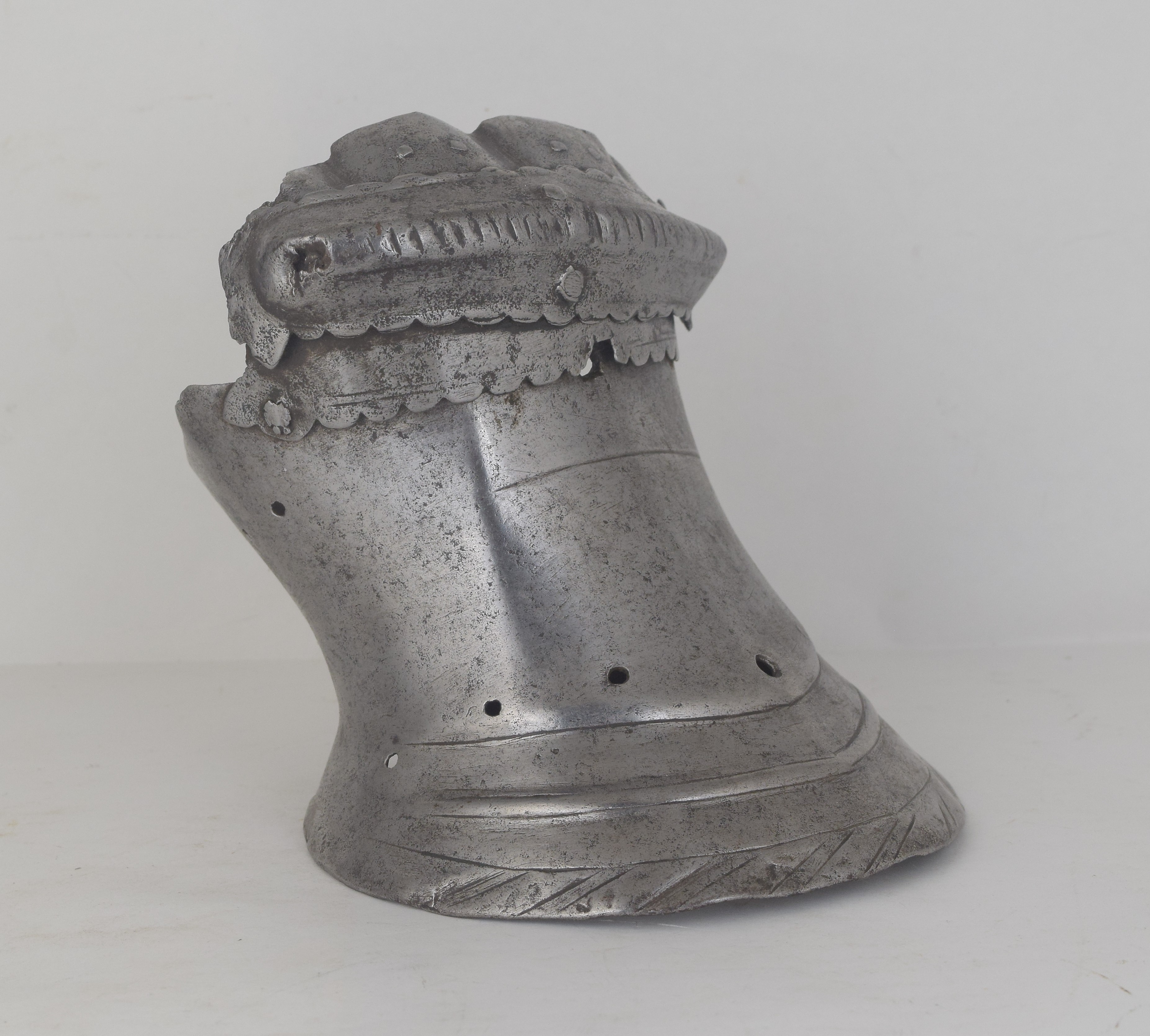
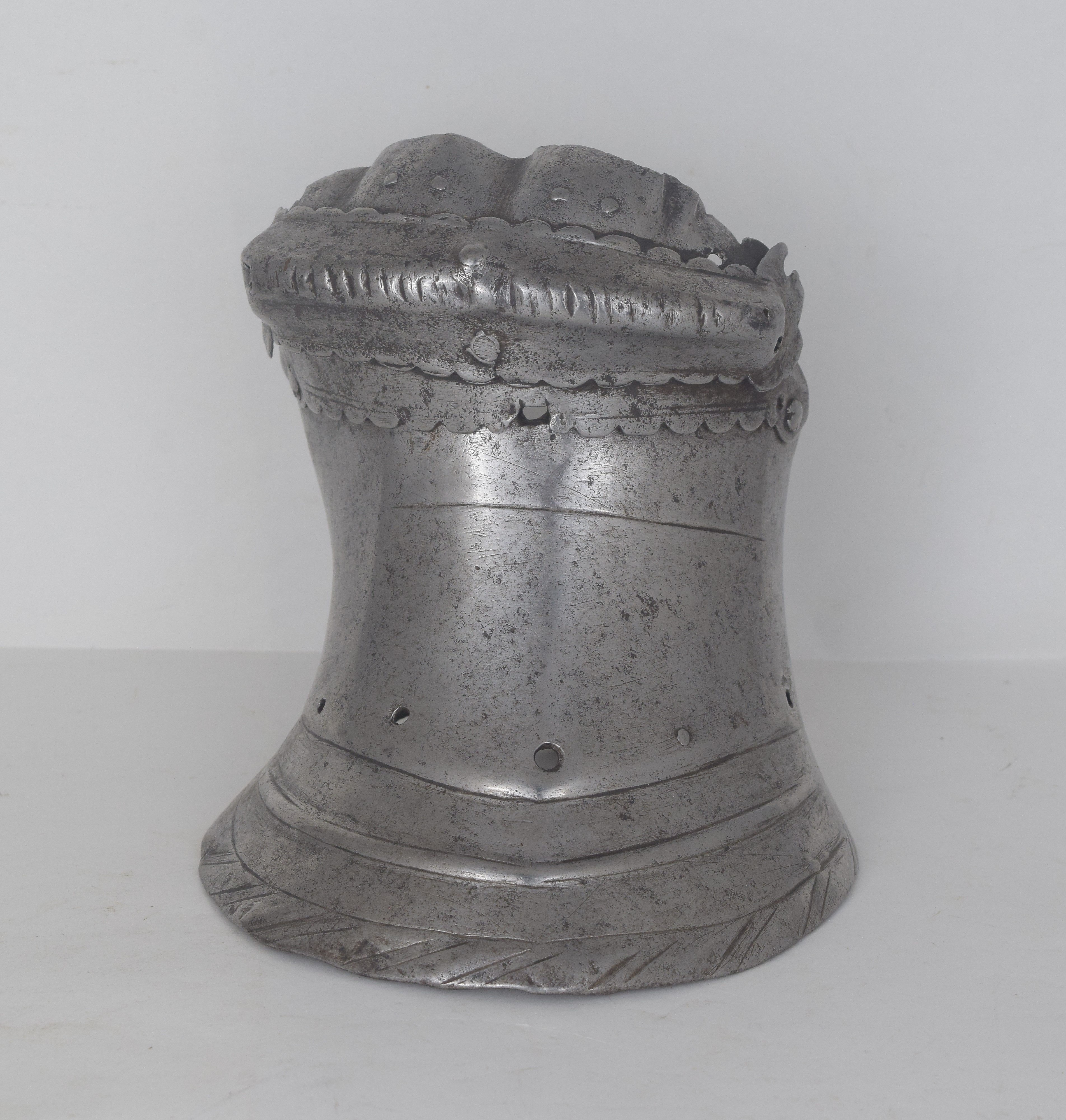
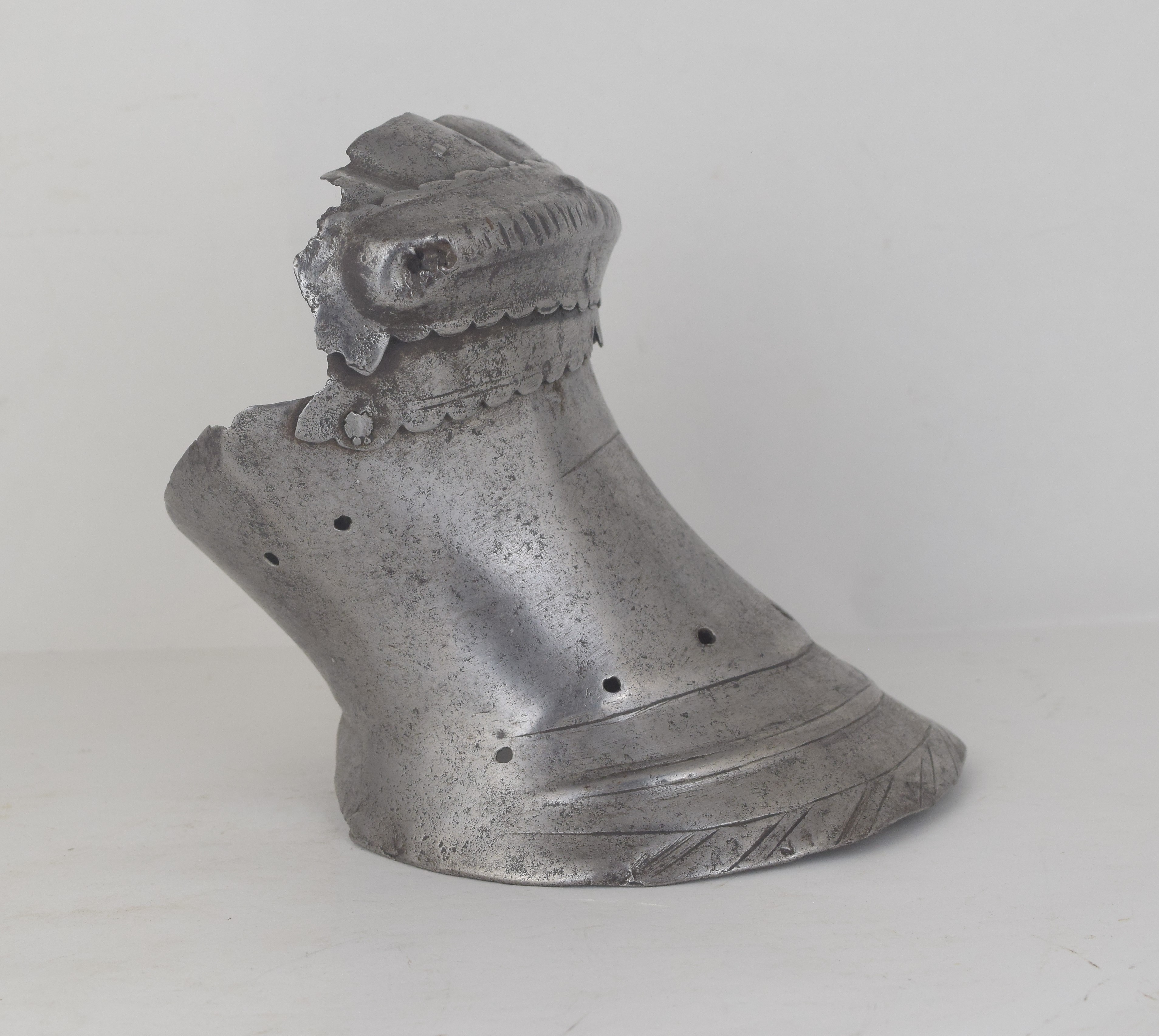


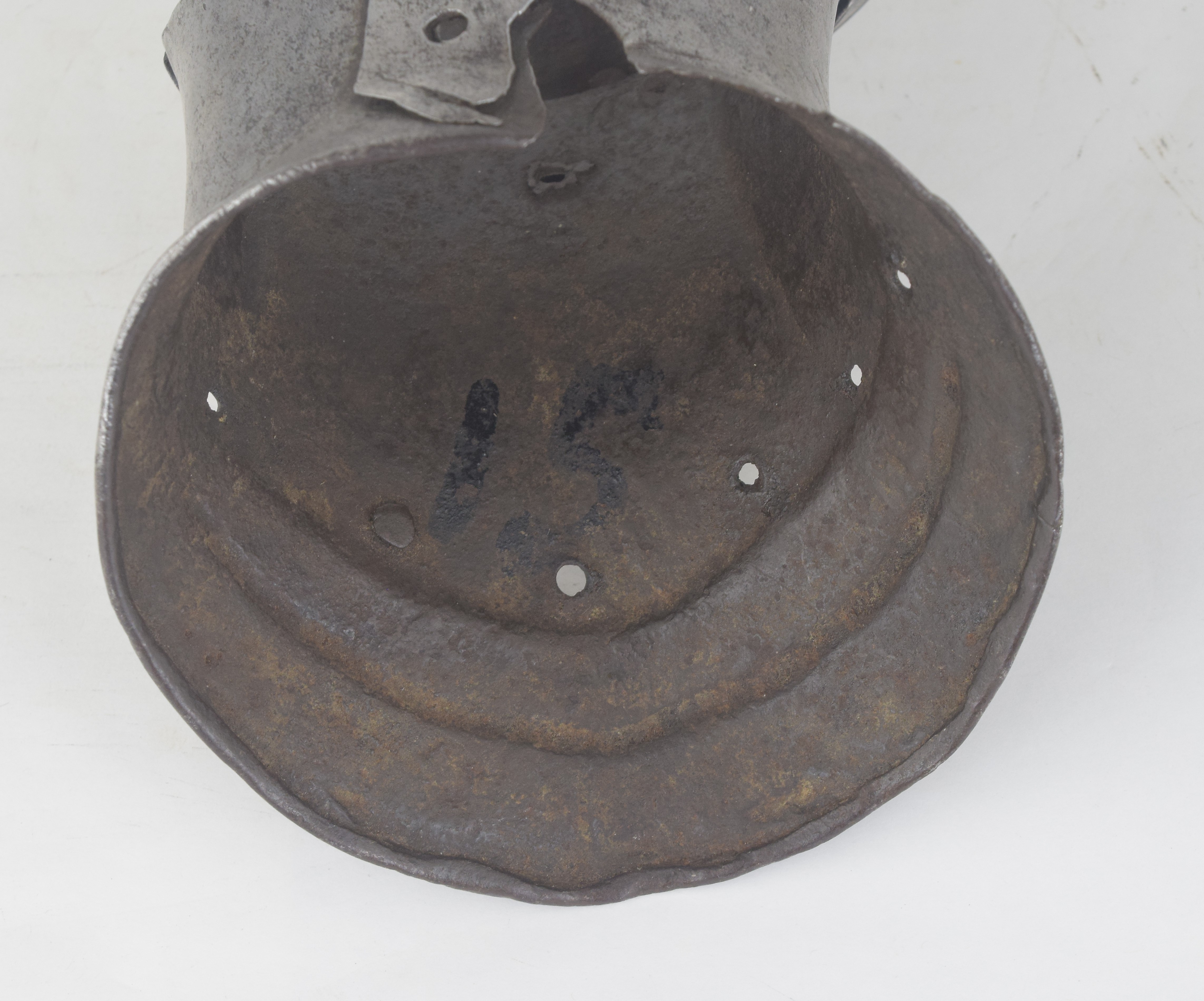
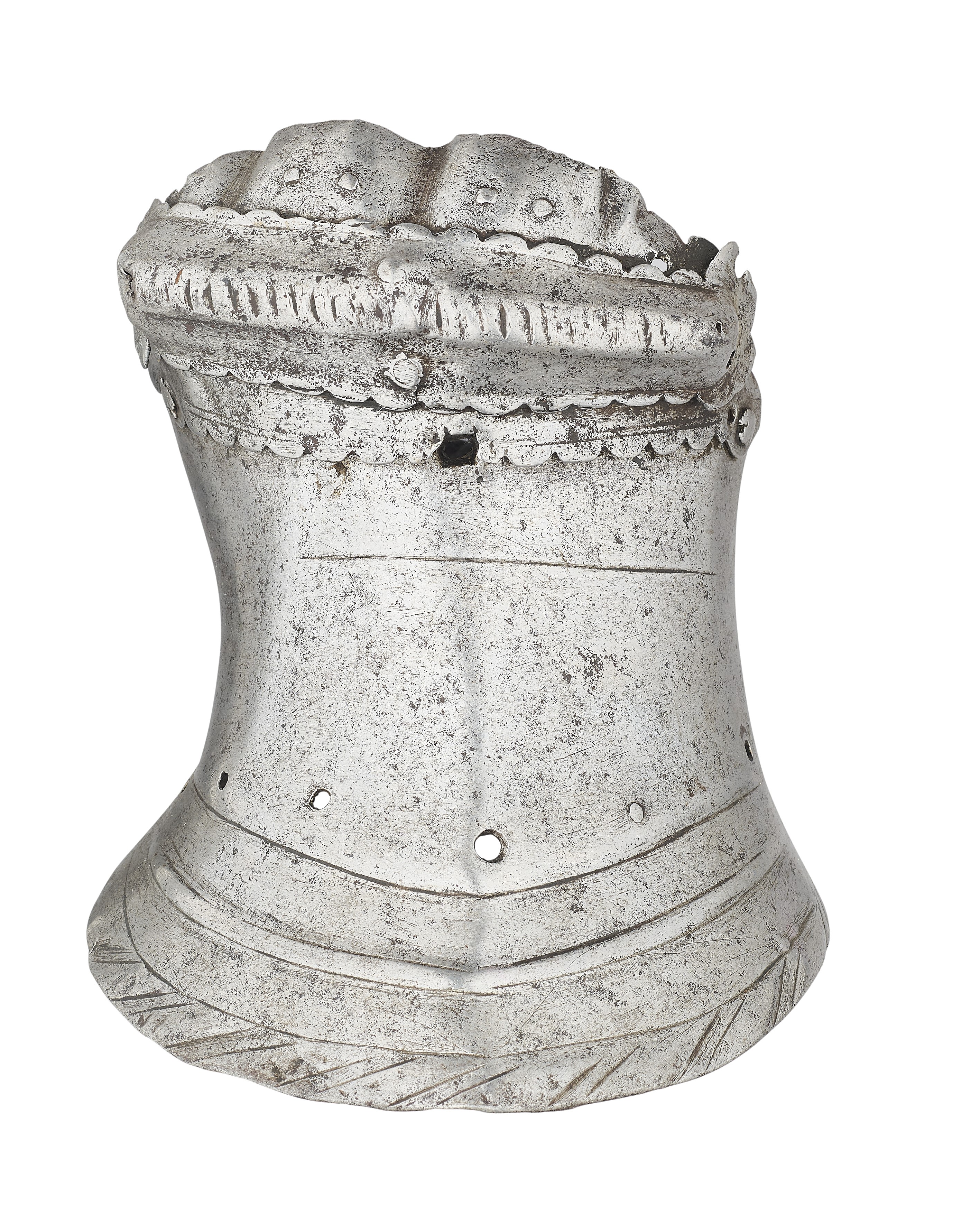
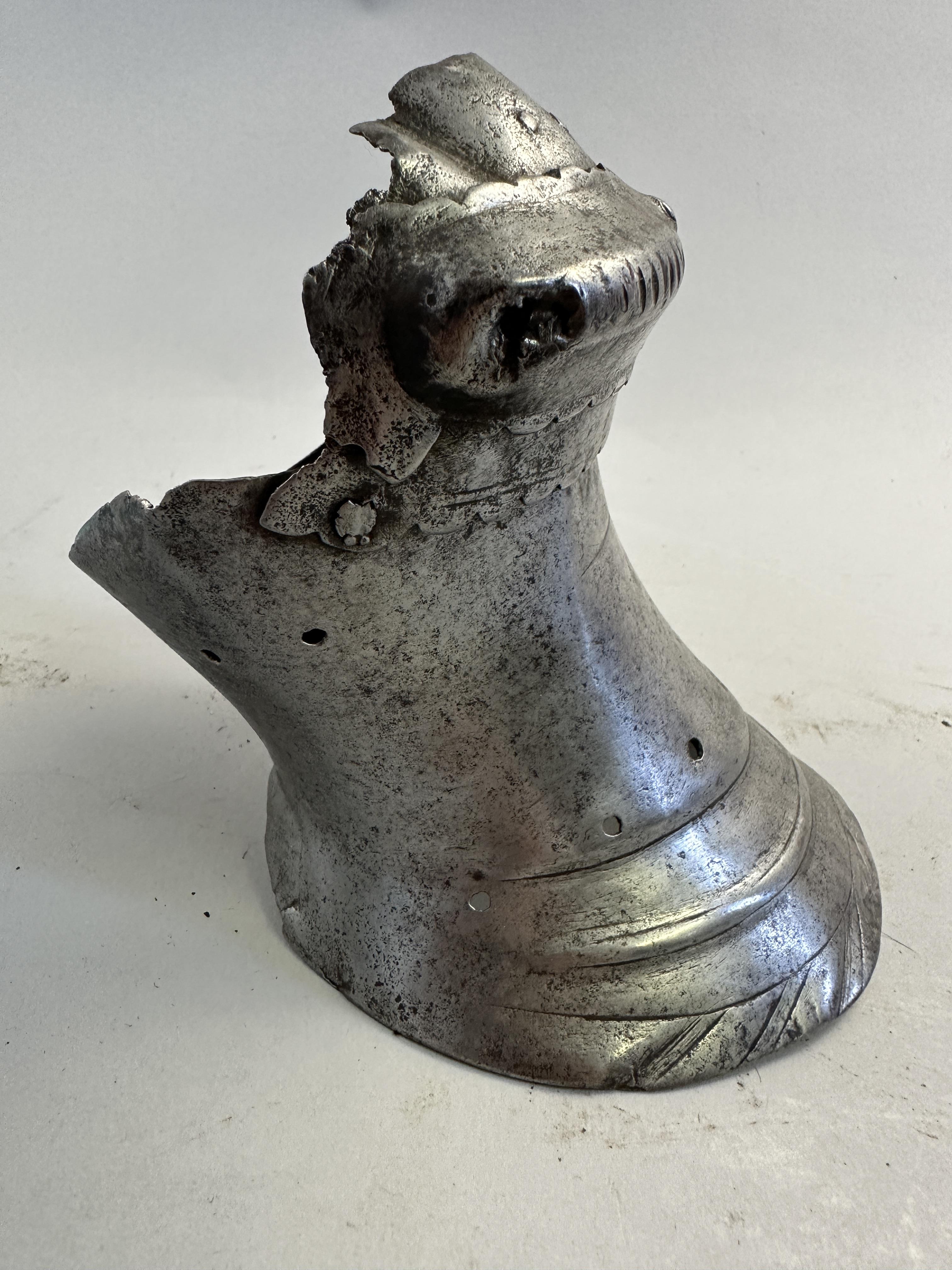
Gauntlet mid 16th c.
Western European, possibly Flemish. One piece slightly flared cuff extending over the base of the hand. Single metacarpal plate. Roped knuckle plate and a single finger plate. The finger plate retains pairs of rivets in each finger, indicating that it was originally equiped with scaled finger plates for the individual fingers. The cuff with a crease aligned with the center of the back of the hand and two additional creases at the sides forming a "boxed" shape. There ia a single horizontal engraved line at the outside of the wrist which extends between the boxed creases. The border of the cuff formed with a file roped inward turn and a doubly recessed border. The border is interesting - the inward turn is narrow but the "roped" area is much wider. The exposed interior shows that the "roping" is actually partially embossed. Edges of the metacarpal and knuckle plate with scalloped edges. The overall form of the cuff and back of hand is similar to item number A-207. This one appears to be somewhat earlier. The ends of the knuckle plate are lost, so the original pivots have been replaced with rivets that stabilize the plates into position. A very similar pair of gauntlets are displayed with the "Pembroke" armor in the Royal Armouries (II.164), where the description indicates that they are "associated" with the armor.
Weight: 14.4 ounces (410g).
Thickness: varies significantly in the cuff plate - .037 in. up to over .070 in. The thickest areas are in the back behind the wrist. There seems to be little intentional thickness manipulation.
Ex. Col. Norman Fargo who built a major collection including early pieces from the Howard Curtis collection.
If you have any questions, please send them to Wade Allen
This site last updated Wed Jul 09 21:38:05 EDT 2025